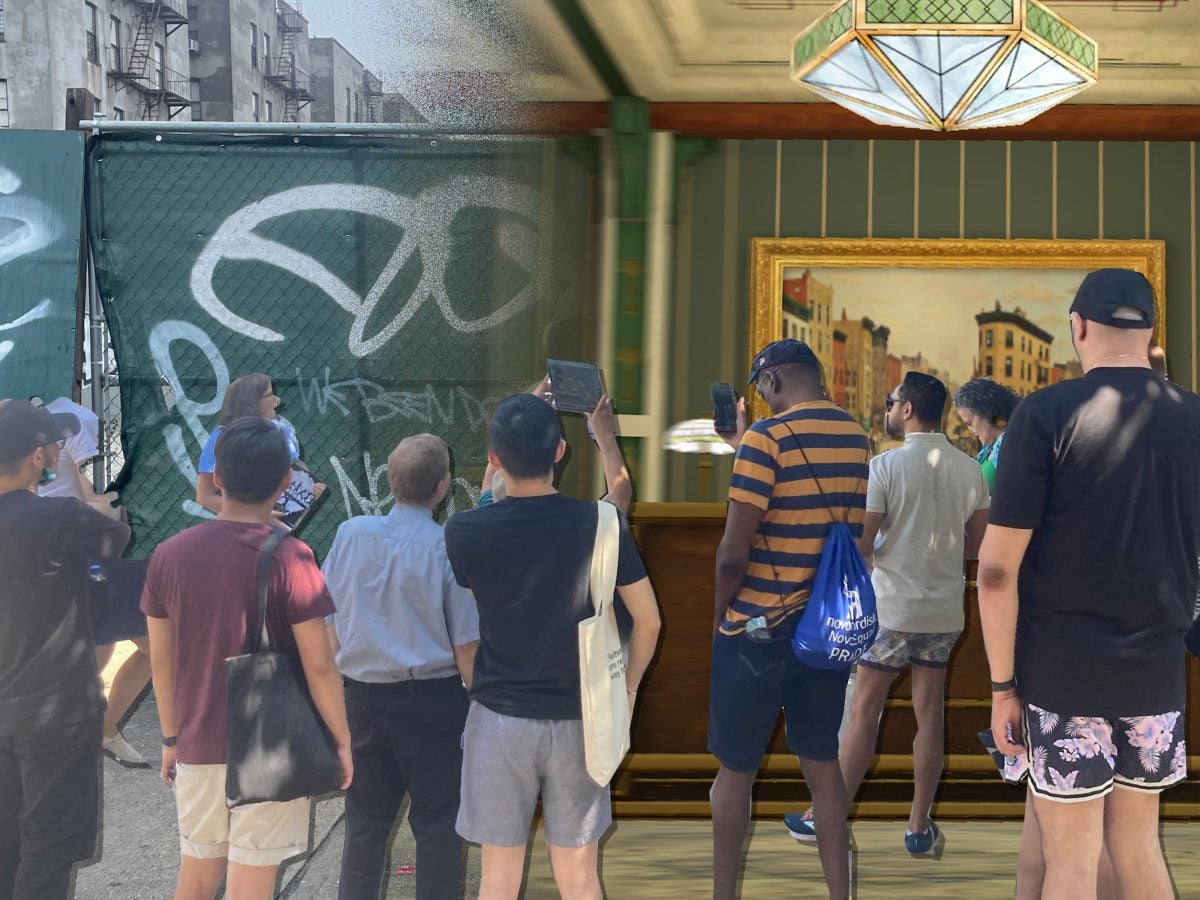
The Harlem Renaissance is one of the most iconic eras of all time. During the 1920s and 30s, the Harlem neighborhood in New York City birthed art that would live on within culture. From musical venues that launched the career of the legendary Josephine Baker to the captivating works of poetry by Langston Hughes, it was a time when Black creatives began to share the culture and their experiences unabashedly. While we may pay homage to the most notable figures from that time, members of the LGBTQ+ community were among the most influential contributors to the movement.
In earlier times, people were forced to keep their sexual orientation or gender identity a secret if it was against the cis-gender societal expectation. However, the Harlem Renaissance era was home to safe spaces for people in the queer community, where they could be their fullest selves. In the present, architectural designer and LGBTQ+ advocate Abriannah Aiken, who is White, has come up with a way to highlight the gems of the queer spaces within Harlem and shine a light on their historical importance, a history that for many, has been erased.
While studying at Columbia University, Aiken joined a student organization called QSAPP (Queer Students of Architecture, Planning, and Preservation). This organization fosters conversation and community among LGBTQ students, their allies, faculty, and alumni. During her time, Aiken and a few other group members published a book called Disappearing Queer Spaces, which explores the history and significance of since-demolished queer landmarks in Harlem.
“So there’s this amazing organization called NYC LGBT Historic Sites Project that documents existing queer spaces within New York City. But, one thing we noticed is that it only documents spaces that currently exist. And we were like, well, there’s a lot of spaces that no longer exist,” Aiken says. “So we used this Excel document they were currently using and sifted through it. We realized there were a lot of spaces in Harlem and a lot of amazing stories connected to those spaces. A lot of them date back to the Harlem Renaissance. There’s a really beautiful story to tell of the queer Black voices from the 1920s. Many of these folks were known in the Harlem Renaissance, but their queerness was erased from history, and buildings no longer existed. This led us to write the book called Disappearing Queer Spaces, which documents seven spaces.”
Based on Aiken’s research, some of the spaces spotlighted include Hotel Olga, where Bessie Smith and Claude McKay used to stay, the Savoy Ballroom, where the “Lindy Hop” was created, and the Clam House, where Gladys Bentley performed nightly with her top hat and white suit. From the book, Aiken decided to create a more engaging and immersive way to educate others about these spaces. The designer teamed up with UX consultant and XR designer Terry Vallery II, who is Black, and created an app called Queer Harlem Renaissance. She integrated walkable in-person tours, with help from Vallery and Brian Turner, also a Black male and the former co-chair of the QSAPP, in New York for NYC natives and visitors alike to see the actual sites where these buildings once stood.
“DLR Group, where I work, gave me this $5,000 grant to produce the app. That allowed me to bring in an amazing collaborator. I did all the research, history, and reconstructing of these buildings, and Terry came in to figure out how to do all the AR stuff,” Aiken explains.
“In the app, you use Google Maps to walk around and see all seven spaces. You can click on each of them. It will share a history of that space through text, and then you can jump into the AR experience,” Aiken adds. “If you are in Harlem or another state, it’ll look for where you are and help you bring the building to life in front of you. When I used the app, I could go up and peek over Gladys Bentley’s shoulder and watch her play the piano. Or listen to Claude McKay recite a poem. You can truly see what used to be there and how it was important to queer history.”
With the Queer Harlem Renaissance app, Aiken’s goal is to bring awareness to the unfortunate reality that queer spaces and communities are constantly facing the threat of erasure in different aspects. Using technology, she aims to ensure they can thrive.
Regardless of what a person identifies as, one’s impact and legacy are timeless. It should be honored and acknowledged for generations to come. If you are interested in checking out the Queer Harlem Renaissance tour, download the app and travel back in time – and stay tuned for details on the next Queer Harlem walking tour.




